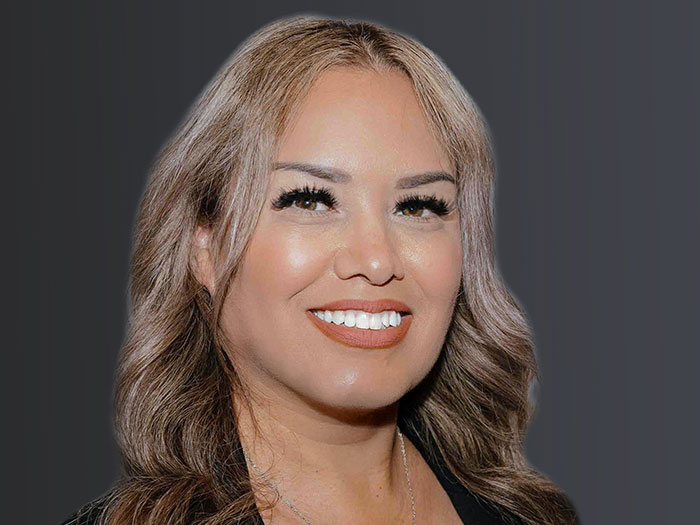Sponsored Content by The Hartford
Avoiding The Panic: How To Plan For Multinational Losses

Having some type of multinational exposure is almost inevitable for Fortune 500 and small- to middle-market companies alike. The need for international executive travel and the expanse of global supply chains bring risk to organizations of all sizes in every sector.
Also universal is the general lack of preparedness for losses that happen abroad, and the fog of confusion that can set in when companies don’t know how to respond. Events that may appear straightforward in the U.S. take on a new level of complexity when regulatory variance, language barriers, time zone differences, and geographical distance are factored in.
“Our research suggests that more than 40 percent of mid and large commercial enterprises in the United States have never had specific conversations around multinational exposures with their brokers and insurers1,” said Alfred Bergbauer, Head of Multinational Insurance, The Hartford.
As a result, “there is a panic moment when companies are unprepared for the complexity of multinational losses, especially when it involves the safety of employees.”
The following four loss scenarios demonstrate how complex multinational risks can be, and why it’s imperative for companies to work with insurers that have the expertise to manage them:
1. Employee Injury

Alfred Bergbauer, Head of Multinational Insurance, The Hartford
If an employee is injured during the course of employment in the U.S., handling their care and finding coverage for treatment would fall under the jurisdiction of workers’ compensation. The network of providers and process for managing a claim is already established.
If the same employee is injured while abroad, the protocol is not as simple.
“A piece of the injury claim could be covered from accident insurance. A piece of it could be covered through worker’s compensation insurance. A piece of it could even be paid through health insurance. As a result, it’s important to understand how these coverages work together when a loss occurs overseas.” Bergbauer said.
“More importantly, how will care and transport be coordinated? There may be a designated ambulance service or hospital where the employee should receive attention in a particular country. Bear in mind that the injured employee may not speak the local language and is likely unfamiliar with his/her surroundings. If medical evacuation is called for, what assistance provider will be called to action, and what is the process for notifying them? Who will quarterback all of these communications and ensure action is taken quickly?
When companies aren’t prepared for this scenario, making rushed or uncoordinated decisions can be costly.
2. Kidnap & Ransom
How would your company respond if a key executive is kidnapped and held for ransom in a foreign country? This situation would be high stress anywhere, but when it happens abroad, there is the added challenge of getting to the kidnapped employee and bringing them home.
“Is there a crisis management plan in place? Is there a third-party vendor that is going to join the team? Who’s going to take point? These are the critical factors that lead to a successful outcome when something bad happens.”
In a kidnap and ransom scenario, there is also a possibility that the employee will be injured in some way, which again highlights the importance of coordinating services and coverage. Whether a kidnap & ransom, business travel accident or workers’ compensation policy is triggered affects the vendors that will be called into action and how those actions will be financed.
“There are potential balance sheet implications with this type of event, and companies may have to contend with uncomfortable surprises like taxes or extra fees they didn’t realize they would be responsible for,” Bergbauer said. “That’s why it’s so critical for companies to understand how their multinational insurance program is structured, what policies will be triggered, and how they’ll pay for things when the worst happens.”
3. Product Liability
Whether product liability coverage applies under a domestic or foreign policy can depend on the interplay of where the product was manufactured and sold, where the injury takes place, and where the suit is filed. So, a U.S manufacturer selling products in multiple countries must consider the legal landscape of each of those countries when estimating the potential impact of a product liability loss.
Assessing this exposure becomes a complex equation factoring in local regulations, legal precedent and policy language. It’s a complex task that, all too often, brokers and carriers sometimes fail to discuss in detail with their multinational clients.
“It is important to talk about where products are sold, and the nature of the risk associated with the products. Teasing this out and doing a scenario plan focusing on how each policy will respond in the event of a loss can help inform structuring an insurance program that meets the risk finance strategy of a company.
“The coverage should always address a company’s specific risks, but rarely do brokers and clients pull in the carrier in to have a conversation around how this policy is to interact with other products in the context of a multinational program.”
4. Property Loss
 A property loss would seem to be the most straightforward type of loss. Property gets damaged or destroyed, and the policy pays to repair or replace it. But when the loss occurs in a foreign location, the ripple effects can be more profound.
A property loss would seem to be the most straightforward type of loss. Property gets damaged or destroyed, and the policy pays to repair or replace it. But when the loss occurs in a foreign location, the ripple effects can be more profound.
In a multinational operation, business locations are often interconnected and reliant on each other. For example, if a factory producing sub-component parts in the Philippines is destroyed by fire, then the factory in Germany relying on those parts can’t furnish the finished product. The retailer in the U.K. doesn’t get its product on time, threatening future revenue or contractual obligations and the bottom line of the parent company in the U.S.
A single physical loss in one country can very quickly cause business interruption and economic loss in three or four countries down the supply chain. But the property policy on that Philippines factory may not pick up those claims. Suddenly that single, straightforward loss is triggering separate policies in multiple countries around the globe.
“If a business has multiple carriers, the potential for an outcome that leads to incomplete compensation becomes really high. If a business has a coordinated global insurance program with the expertise to manage losses impacting the supply chain, the potential for covering the loss is greater,” Bergbauer said.
What Defines a True Multinational Insurer
To work through the panic of a loss and lift the fog of confusion, multinational organizations need to have a consultative relationship with an insurer that doesn’t just write policies and collect premium, but that takes time to truly understand a client’s operations and specific exposures. Insurance carriers must be willing to stress test a client’s insurance program, walking through loss scenario to address the nuances and complexities of multinational losses.
The Hartford’s team of multinational underwriters and claims professionals does just that, working across lines and alongside domestic teams to collaborate with insureds and brokers on coverage options.
“We built a multinational capability within The Hartford that it is fully embedded within the fabric of our operations,” Bergbauer said. “When one of our producers or domestic underwriters spots a multinational exposure, we can be engaged to consult with those customers and dive into their risk profile.”
In addition to helping clients identify and define their exposures, The Hartford’s multinational group can provide coverage options for a policyholder to build a program tailored to meet their needs thanks to its Global Insurer Network. Through partnerships with 89 individual insurance groups around the world, The Hartford has the ability to issue local admitted policies in more than 220 countries, ensuring all regulatory requirements are met.
These partnerships also ensure lines of communication are kept open wherever there is a loss, so that The Hartford’s U.S.-based claims professionals can work with local teams to coordinate services, provide the needed financing, and gather information to relay to the client.
“There is only a small community of insurers that have the expertise and products to provide the policyholder with the ability to efficiently and effectively build their multinational program, and we are one of the few with the capability to pull this all together,” Bergbauer said.
To learn more, visit https://www.thehartford.com/global-insurance.
The Hartford® is The Hartford Financial Services Group, Inc. and its property and casualty subsidiaries, including issuing company, Hartford Fire Insurance Company. Its headquarters is in Hartford, CT.
1. 2017 Survey Conducted by Hartford US based insureds with annual sales or revenues of $10m to $1B
![]()
This article was produced by the R&I Brand Studio, a unit of the advertising department of Risk & Insurance, in collaboration with The Hartford. The editorial staff of Risk & Insurance had no role in its preparation.










